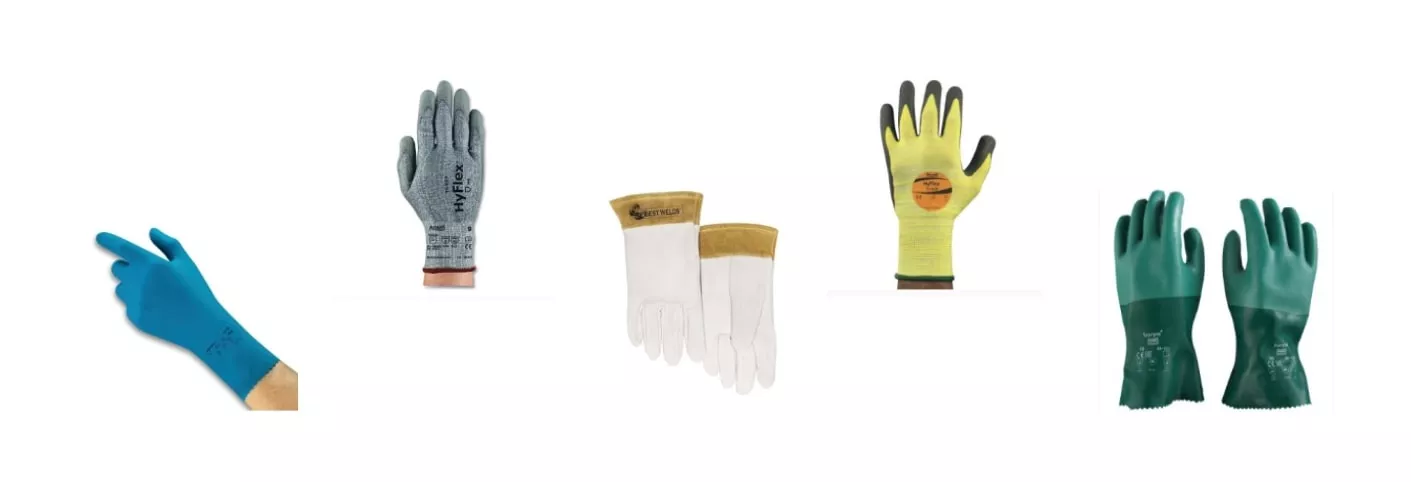Types of Safety Gloves for Hand Protection
Unsupported: Unsupported safety gloves are generally made of rubber and do not have woven fabric liners. They are most often used to protect workers who handle chemicals, solvents, detergents, solutions, or biological hazards. These disposable, multi-use gloves are skin-tight when worn and are ideal for tasks that require greater dexterity.
Supported: Supported workplace gloves contain a coated fabric, typically made by dipping a woven or knitted cloth liner into a liquid glove compound, such as neoprene or nitrile. In addition to offering chemical protection, supported gloves deliver a varying degree of cut protection and help users achieve enhanced grip.
Leather: Leather work gloves are designed to stand up to the most rigorous tasks. These safety gloves protect workers’ hands from heat, cold, impact, and abrasion. They provide dexterity, durability, and comfort and are best suited for general and medium-duty tasks. The use of strong leather ensures that the gloves will last for many years.
Cotton: Cotton workplace gloves may refer to jersey, canvas, terrycloth, or a combination of materials cut and sewn together to create a glove pattern. Cotton gloves may not be sufficient for handling sharp or rough materials, but they do help keep the hands clean and protected against mild abrasions.
Strings: String knit gloves feature durable fibers that are knitted together for use on light-duty tasks. These lighter-weight gloves help reduce perspiration by allowing the hands to breathe. They also offer dexterity and protection. Workers can choose to wear these gloves as a liner for extra protection or can pick coated or dotted varieties to achieve a better grip.
Coated or Dipped Seamless Knit: Workplace gloves that are coated or dipped have several uses, such as cleaning, food processing, oil refining, and some chemical handling. This type of glove is dipped in a resilient polymer coating for added protection. These coatings are designed to protect against chemicals, solvents, punctures, abrasions, and cuts./p>
Cut Protection: Cut-resistant gloves help protect the hands from direct contact with sharp materials, such as metal, glass, ceramics, and other materials. This type of safety glove is best suited for medium to heavy-duty tasks; however, they are generally not effective in protecting against power equipment or punctures. /p>
Multi-Task: Multi-task workplace gloves can be found in a variety of materials, such as cotton, leather, or synthetic materials. The extra material offers greater protection when performing tasks that require specific or superior area protection while maintaining grip and dexterity.












